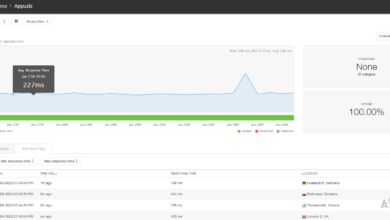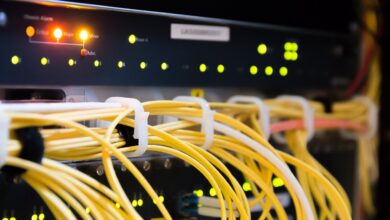How to Monitor the Temperature of a Network Device
Monitoring Network Devices Temperature using Solarwinds
It is essential to monitor the Temperature of your network devices, like routers, switches, firewalls, load balancers, etc., to ensure continuous system availability. High temperatures may cause a device failure and lead to a significant impact. Hence Temperature of the device needs to be monitored periodically to avoid such issues. Solarwinds provides an advanced hardware monitoring solution to monitor hardware information like Temperature, fan, and power supply status. That can be used to create alerts in case any issues are observed. Hardware details can be viewed on the node summary page.

Solarwinds supports the following devices for hardware monitoring, Aruba, Cisco, Dell, F5, HP, Juniper devices, and Arista 7500E chassis. In this article, let’s see how to monitor the Temperature in network devices and configure alerts in case of any issues. To learn more about Solarwinds hardware monitoring, click on this link.
How to Monitor Temperature in Network Device
To monitor temperature in-network or on any device, the device should be polled through SNMP, and hardware monitoring must be enabled. Hardware monitoring is enabled by default while adding a node into Solarwinds. If you cannot see the node’s hardware information, validate whether the node is part of the supported devices. If Yes, click on the List Resources on the node summary page. 
Check the Hardware Health Sensors and save the changes to monitor the hardware details.

To view the temperature details of the network device, open any of the network devices.
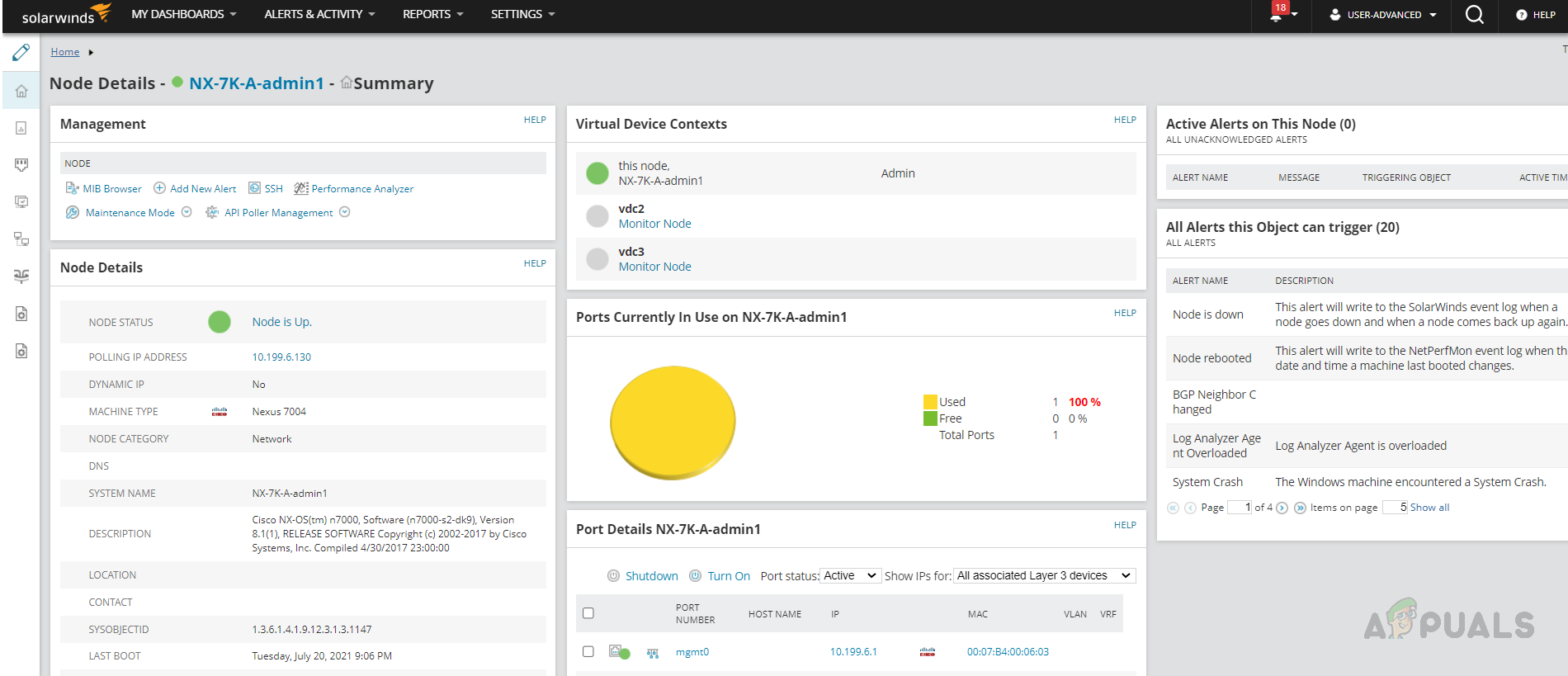
Scroll down to the Hardware Health section.

Expand the Temperature parameter to see the Status of the temperature sensors and the temperature value for the devices.

The Temperature will be monitored for all the module sensors in the device. You can see the name of the module and its Status and temperature value. If you want to check the historical temperature data for any modules, click on the module, which will take us to the temperature chart page.

Here we can see the last hour temperature for the module since the default zoom range is set to the last hour. If you want to see more data, change the time settings and click refresh. Temperature data will load for the selected period.

Here I have selected the last seven days’ data.

We can export the raw data as well for the chart. To export the data, click on Export to XLS.

Open the downloaded to check the temperature data for the selected period. We can see the detailed report for the module.
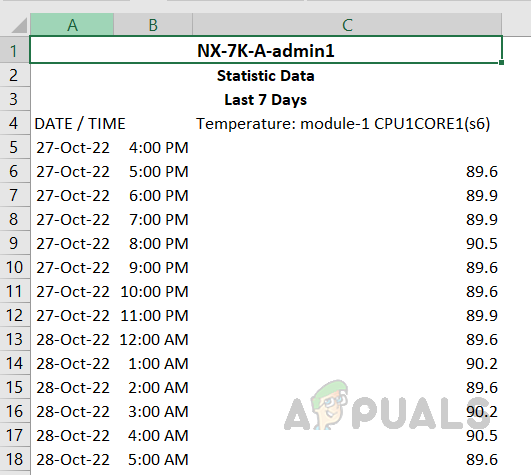
This is how we can monitor and view the Temperature of a network device. Now, let’s see how to configure alerts for Temperature.
Configuring Alert for Temperature on Network Device
Follow the below steps to configure the alert if the Temperature on the network device goes to a critical state or breaches the set threshold.
- Go to Settings and then All Settings.

- Click on Manage Alerts under Alerts & Reports.

- Click on Add New Alert.

- Provide an appropriate name and description for the alert and click on Next.
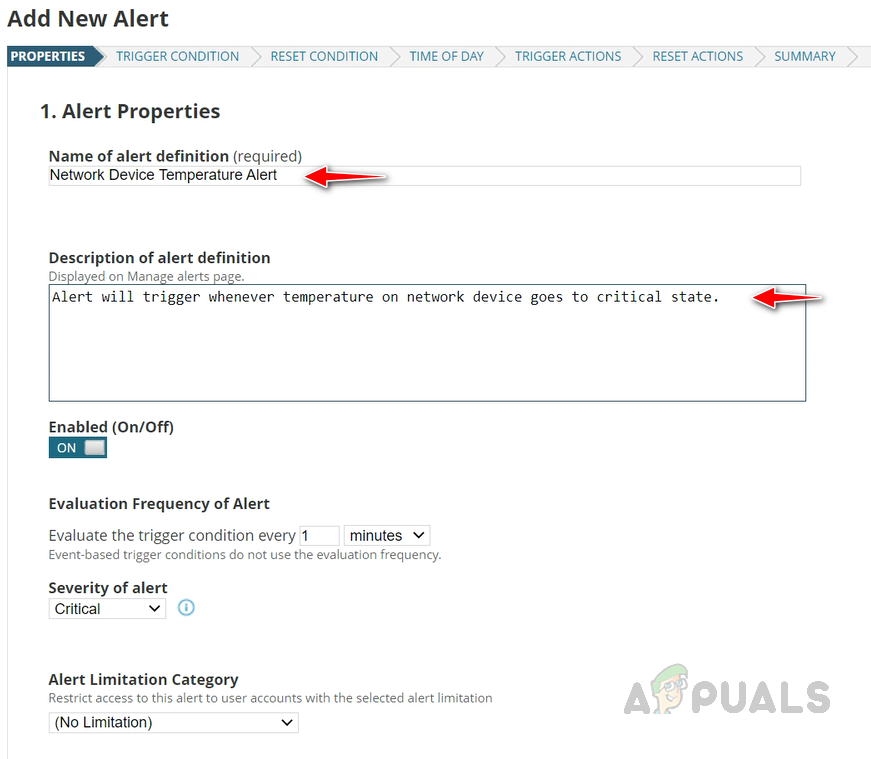
- Since we are configuring the alert for Temperature, we need to choose Hardware Sensor (Node) in the I want alert on the drop-down list.

- Click on the select field drop-down list and select Browse All Fields.
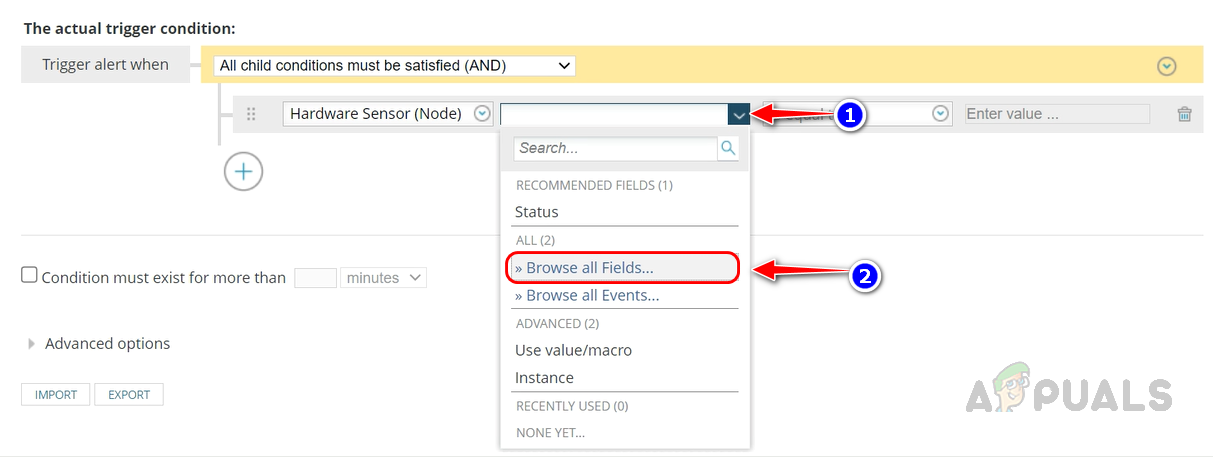
- Select Hardware Type Name from the Hardware Sensor (Node) table and click on Select.
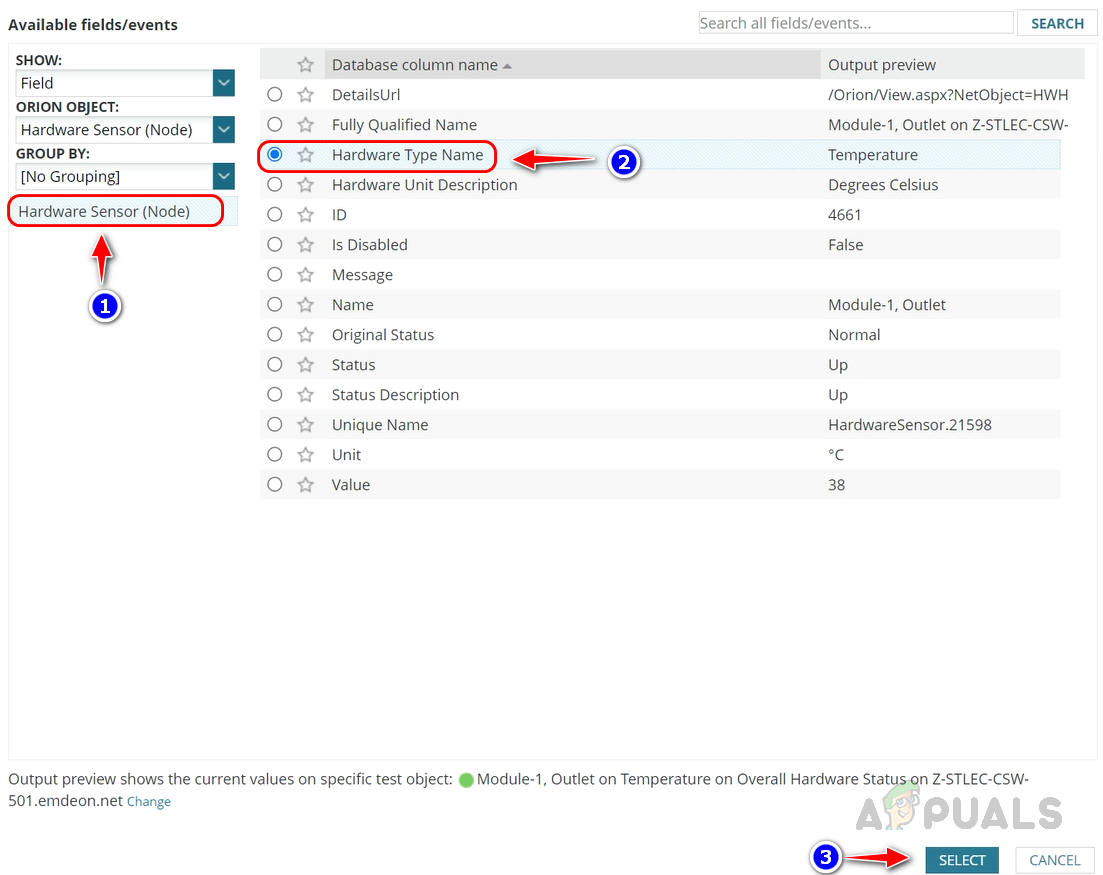
- Select Temperature from the drop-down list.

- Now we need to set the condition for the temperature status or any threshold value for the Temperature. Alert will trigger based on the condition we set.
- First, let’s see how to set the condition for the threshold value.
- Click on the + icon in the condition builder and select Add Single Value Comparison (Recommended).

- Select Browse All Fields from the drop-down list in the new condition we added.

- Select Value from the Hardware Sensor (Node) table and click Select.
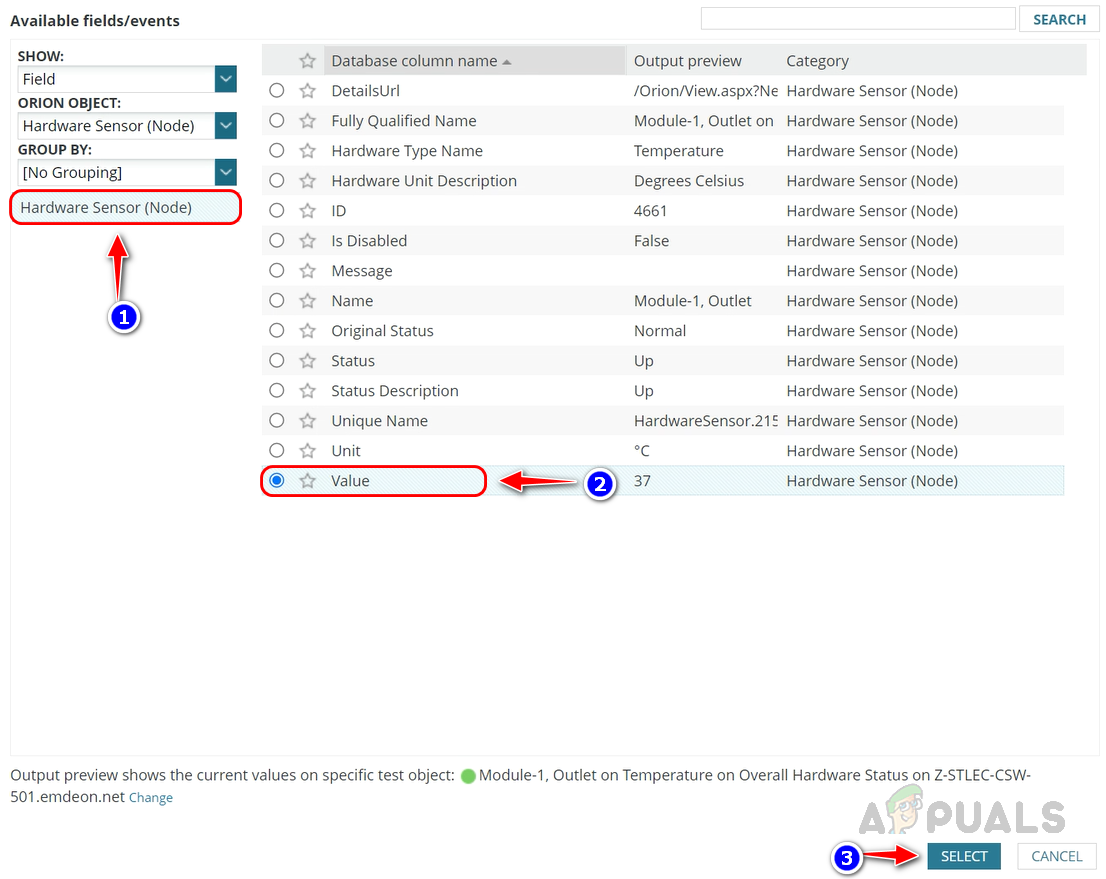
- Select greater than or equal to from the drop-down list and provide the temperature threshold value in the text box you want to set. Click on Next.

- If you want to set the alert condition based on the temperature sensor status instead of the value, select Status in the select field drop-down list.
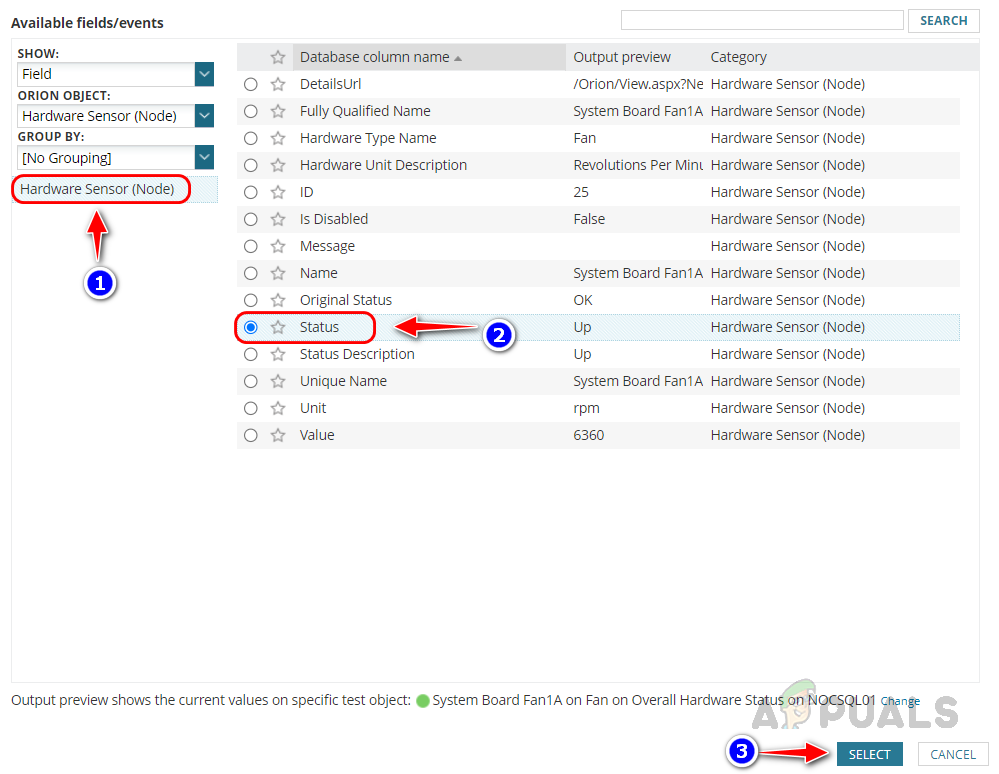
- Select Critical in the drop-down list.
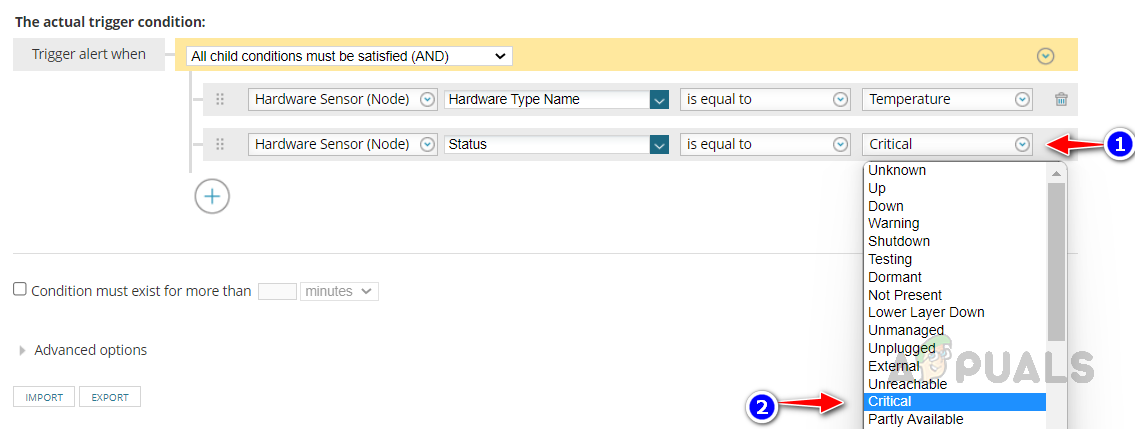
- Whenever the temperature sensor goes to critical Status, then the alert will trigger. Solarwinds automatically calculate the critical value.
- Use the default reset condition and click on Next.

- In the Trigger Actions section, click on Add Action, select Send an Email/Page action, and click on Configure Action.

- Copy the trigger action to the Reset Action section and modify it as needed.

- Review the alert summary and click on submit to save the alert.
This is how we can monitor the temperature status on a network device and configure alerts to get notified whenever there is an issue in the temperature.

